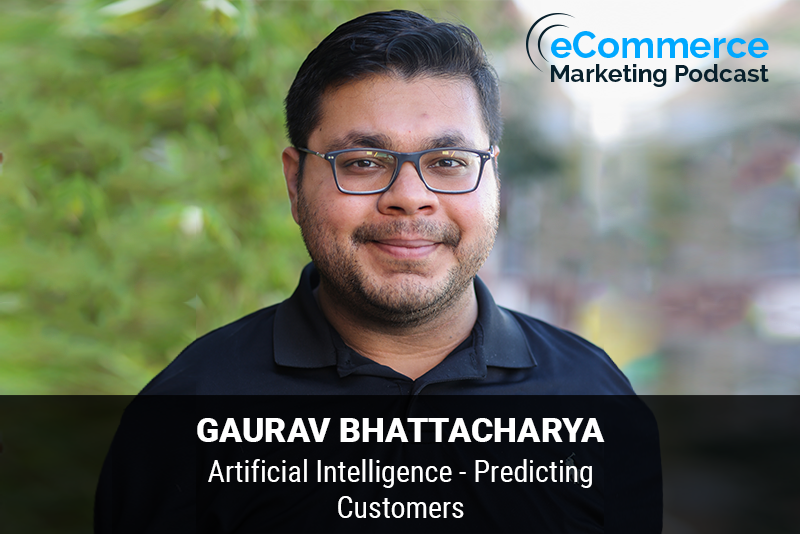
The eCommerce Marketing Podcast walks you through everything that goes into ecommerce marketing — from inbound marketing to paid advertising to conversions. Learn the strategies top marketing experts use to grow their businesses.
Marketing Strategies Revealed in this Episode:
- What is artificial intelligence and how does it relate to helping a businesses grow and find customers
- What specific strategies can you put in place using AI to help you predict and acquire the right customers?
- What specific tools and resources do you need to use to make artificial intelligence work.
- Where the future of Artificial Intelligence and machine learning is headed with regards to ecommerce marketing

Episode Title: Artificial Intelligence – Predicting Customers with Gaurav Bhattacharya
Host: Arlen Robinson
Guest: Gaurav Bhattacharya, CEO of Involve
In this episode of the E-commerce Marketing Podcast, host Arlen Robinson chats with Gaurav Bhattacharya, CEO of Involve. They discuss the transformative power of artificial intelligence (AI) and machine learning in predicting customer behavior and enhancing business growth. Gaurav shares his inspiring journey from starting his first company in India to founding Involve, a company focused on leveraging AI to build products for distributed teams.
Key Takeaways:
- Gaurav’s Background and Journey [00:00 – 07:30]
- Gaurav’s early interest in computers and coding after his mother bought him an old Windows PC [01:30].
- Starting his first company at 17 to help prevent female foeticide in India [03:00].
- Transitioning to the U.S. and founding Involve to address challenges in predicting customer churn and growth [05:00].
- Introduction to AI and Machine Learning [07:30 – 12:30]
- Definition and basic concepts of artificial intelligence and machine learning [08:00].
- The potential of AI to augment jobs rather than replace them [09:30].
- Using historical data and algorithms to predict outcomes and improve processes [10:30].
- Applications of AI in E-commerce [12:30 – 18:00]
- Automation and prediction as the two main applications of AI for businesses [13:00].
- Automating tasks like email responses, lead generation, and customer support [14:30].
- Predicting customer behavior to enhance lead generation and conversion rates [15:30].
- Strategies for Predicting and Acquiring Customers [18:00 – 23:00]
- Building early warning systems to predict customer churn and identify expansion opportunities [18:30].
- Examples of tools and platforms that assist in automation and prediction [20:00].
- Importance of monitoring key indicators to maintain customer satisfaction and drive growth [21:00].
- Future of AI and Machine Learning in E-commerce [23:00 – 26:30]
- AI’s role in personalizing the shopping experience and enhancing customer engagement [23:30].
- The integration of AI into various facets of e-commerce, from smart shopping to predictive analytics [24:30].
Guest Info:
- Name: Gaurav Bhattacharya
- Position: CEO of Involve
- LinkedIn: Gaurav Bhattacharya
- Email: Gaurav Bhattacharya











